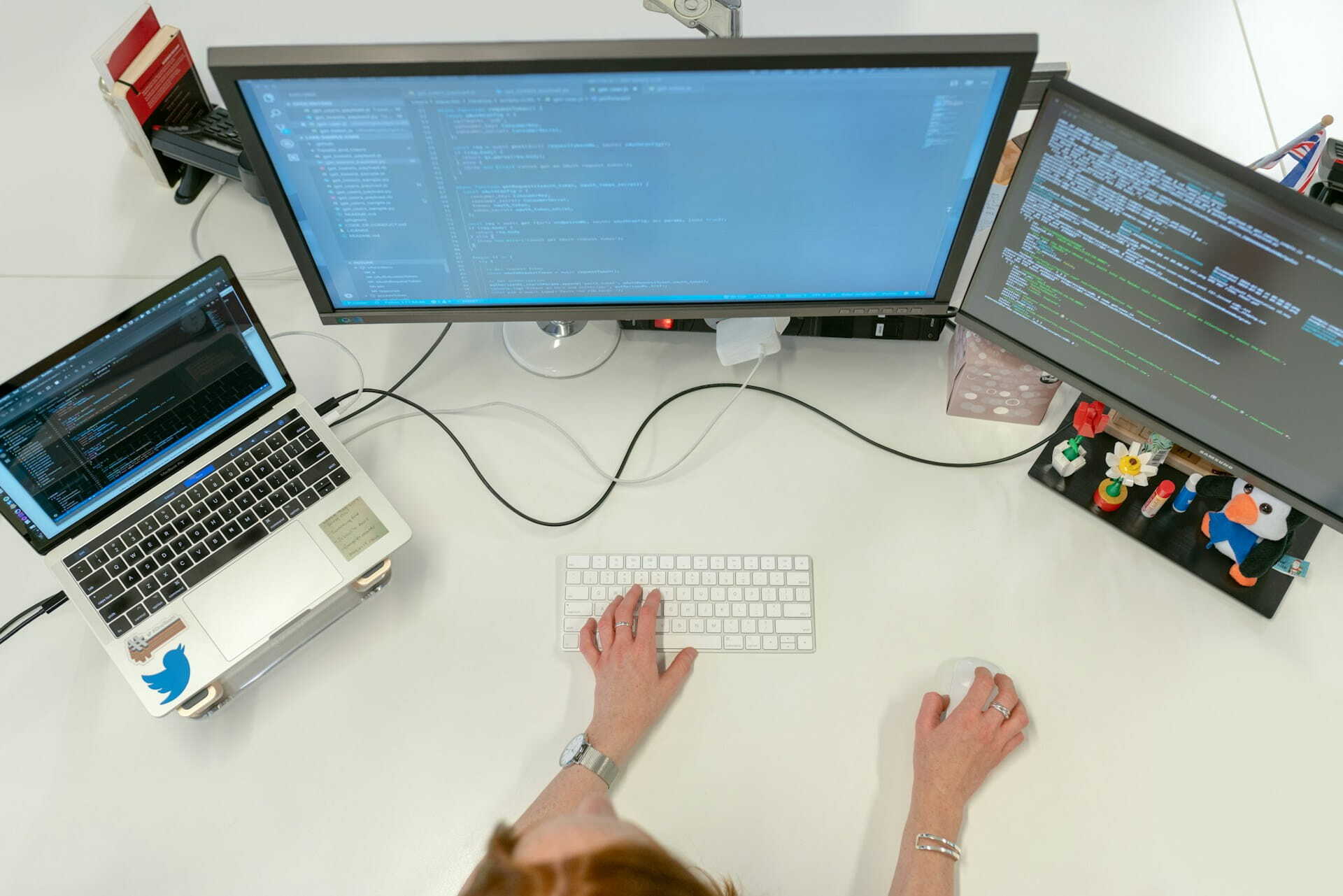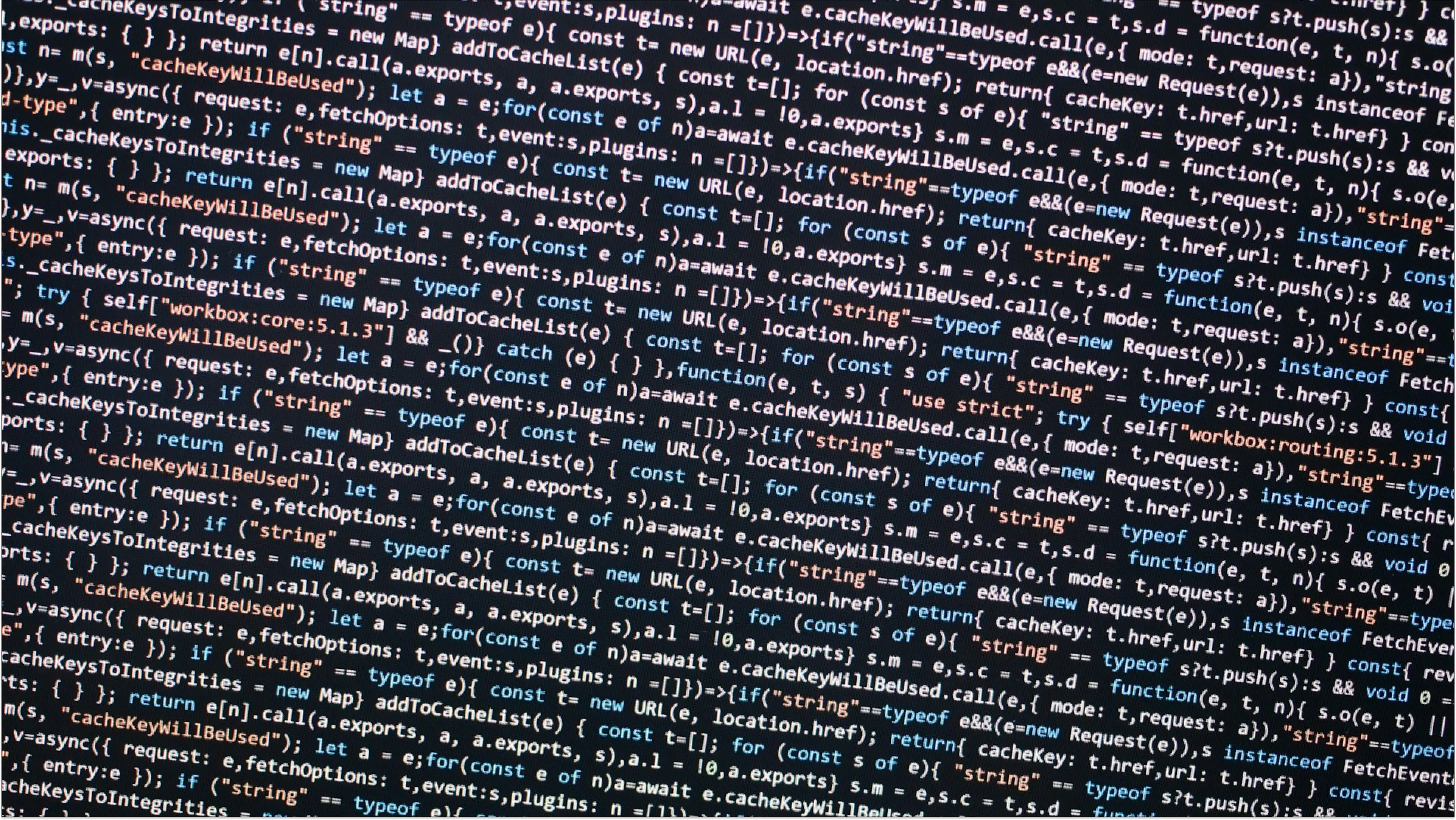26 August 2025 (updated: 26 August 2025)
How AI is Transforming Automated QA Testing for Enhanced Efficiency
Chapters

As AI tools become more sophisticated, they are transforming software testing and automated testing into a more efficient and reliable process.
In the ever-evolving landscape of technology, artificial intelligence is steadily rewriting the rules of quality assurance. AI is transforming software testing and quality assurance by improving efficiency, automation, and scalability. This shift not only speeds up the release of software but also enhances its overall quality, making it a crucial development for businesses striving to maintain a competitive edge.
By embracing AI-driven testing, companies can promptly identify and rectify bugs, ensuring a smoother user experience. Join us as we delve into how AI is reshaping the future of quality assurance, making it more intuitive and effective than ever before. AI in QA is not just a trend, but a fundamental shift that is redefining the industry.
The Evolution of Quality Assurance
Quality assurance (QA) has undergone significant changes over the years. From manual inspections to automated processes, the field has continually evolved to meet the demands of increasingly complex software systems. Learn how traditional QA methods have developed and the challenges they face today. Traditional testing methods, while foundational, often struggle with limitations in speed, scalability, and accuracy, making them less effective for current industry needs.
The rapid pace and complexity of modern software development have driven the evolution of QA practices to ensure greater agility and precision.
Traditional QA Methods
Traditional QA methods formed the bedrock of software testing, relying heavily on manual processes to ensure software met predetermined standards. These methods often involved step-by-step manual inspections and reviews, requiring significant human effort. While this approach ensured comprehensive checks, it was time-consuming and prone to human error. Traditional testing, with its reliance on manual effort, often faced limitations in speed, scalability, and accuracy.
The traditional process involved writing test cases, executing them manually, and recording the results. This detailed attention to test data and manual testing established a baseline for quality assurance, contributing to consistent software reliability over the years.
However, as software systems grew in complexity, traditional methods struggled to keep up. Even the most skilled testers can make human errors and overlook subtle bugs, leading to potential defects in the final product. The limitations in scope and scalability of manual testing became apparent, necessitating a shift towards more automated solutions. Despite these challenges, traditional QA methods laid the groundwork for modern testing techniques. Traditional QA also faced significant testing challenges, such as difficulty in scaling, maintaining quality, and ensuring efficiency in increasingly complex environments.
Challenges in Manual Testing
Manual testing, while thorough, presents several challenges that impact efficiency and scalability. Firstly, manual processes are labour-intensive, requiring testers to meticulously execute each test case. This significantly slows down the development cycle.
Moreover, human error is an inherent risk in manual testing. Even the most skilled testers can overlook subtle bugs, leading to potential defects in the final product. This lack of reliability necessitates repeated testing to ensure thoroughness.
Another challenge is limited test coverage. Manual testing often focuses on specific scenarios, leaving gaps in the overall testing process. This can result in undetected bugs when the software is used in real-world environments. These challenges underscore the need for more efficient testing methods, paving the way for AI-driven approaches. Manual testing demands significant testing efforts, consuming valuable time and resources that could be optimized with automation.
AI in Quality Assurance
With the rise of artificial intelligence, QA has seen significant transformation. Artificial intelligence (AI) is revolutionizing quality assurance by enabling faster, more adaptive, and highly efficient testing processes. AI offers the promise of more efficient testing processes, improved accuracy, and better resource management. In this this section, we dig into the integration of AI in QA and its potential benefits.
AI is now being integrated into various QA workflows, streamlining tasks and reducing manual effort. AI test automation has emerged as a key innovation, enhancing the speed and reliability of software testing. From test case generation to defect prediction, AI-driven tools are reshaping how teams approach quality assurance.
As organizations continue to adopt these technologies, AI-powered testing is delivering greater accuracy, efficiency, and adaptability to quality assurance practices.
Introduction to AI in QA
AI in quality assurance represents a paradigm shift from traditional methods. AI tools for automation testing automate rpetitive tasks, reducing the time and effort required for testing. AI-powered tools play a crucial role in modern QA by streamlining processes and improving accuracy. These tools utilise machine learning algorithms to analyse vast amounts of data, identifying patterns and trends that would be impossible for humans to detect.
By deploying AI, companies can conduct more extensive testing in less time. AI-driven testing tools can simulate countless scenarios, providing broader test coverage and revealing hidden issues before they affect end-users through advanced test automation. This approach not only enhances software quality but also accelerates the development process.
AI’s ability to learn and adapt further strengthens its role in QA. AI simplifies and automates test creation, making it easier to generate and maintain test cases efficiently. As AI systems process more data, they refine their testing capabilities, continually improving the accuracy and efficiency of quality assurance processes.
AI also enables automatic test case generation, further reducing manual effort and increasing test coverage in QA.
Benefits of AI Integration
Integrating AI into QA processes offers several benefits. Firstly, AI tools automate routine tasks, freeing up human testers to focus on more complex issues. This leads to increased productivity and more effective resource allocation. AI-driven test automation further boosts productivity by streamlining repetitive processes and enabling faster test execution.
Secondly, AI enhances test coverage. By simulating numerous scenarios, AI-driven testing can identify potential defects that manual testing might miss. Test automation flexibility is also improved, as AI enables integration with various frameworks and tools, allowing for adaptable and scalable testing processes. This comprehensive approach ensures a more robust final product.
Finally, AI improves the accuracy of testing. Machine learning algorithms can detect subtle bugs and anomalies, reducing the risk of software defects reaching end-users. This level of precision is invaluable in maintaining high-quality standards, especially in performance testing, and enhancing user satisfaction. Additionally, integrating AI can help reduce testing costs by minimizing manual effort, lowering maintenance expenses, and optimizing resource utilization.
Transforming Automated Testing
Automated testing is experiencing a revolution with AI technology. AI introduces new tools and methodologies that enhance the testing process, making it more comprehensive and efficient. AI-powered testing tools leverage artificial intelligence and machine learning to deliver advanced, automated solutions that adapt to software changes and integrate seamlessly into CI/CD pipelines. Explore how AI-powered automation tools and enhanced test coverage are reshaping automated testing.
AI-powered automation tools are designed to streamline the testing process and optimize test execution. By intelligently managing and prioritizing test execution, AI reduces test execution time and improves overall efficiency.
AI-Powered Automation Tools
AI-powered automation tools are designed to streamline the testing process. These tools leverage AI algorithms to automate repetitive tasks, reducing the need for manual intervention. With self-healing, AI-powered tools can automatically adapt to changes in the application’s UI or logic, updating tests as needed to maintain reliability. By doing so, they significantly increase the speed and efficiency of testing processes.
- Real-World Example: One example is the use of AI in automated regression testing. AI tools can automatically identify and execute relevant test cases based on code changes, and update test scripts as the application evolves, ensuring that new updates do not introduce bugs.
- Increased Efficiency: Automation tools execute tests faster than manual methods, allowing for quicker release cycles.
- Cost Savings: By reducing manual effort, companies can allocate resources more effectively, leading to cost reductions.
- Improved Accuracy: AI algorithms can identify anomalies that humans might overlook, enhancing overall test reliability.
- Self-Healing Capabilities: AI-driven tools offer self-healing capabilities, automatically updating test scripts in response to software changes to maintain test reliability.
- Maintenance testing is also crucial, as it ensures ongoing software reliability by proactively updating and assessing tests as the application evolves.
Enhancing Test Coverage with AI
AI enhances test coverage by simulating a wide array of scenarios, beyond what is feasible with manual testing. AI-driven testing also improves regression testing stability by auto-correcting test scripts, enhancing reliability and reducing maintenance efforts. This expanded coverage allows for more thorough testing, identifying issues that may not be apparent in standard testing procedures.
- Data-Driven Insight: By analysing large datasets, AI tools can predict potential problem areas and suggest additional test scenarios. AI also creates optimized test cases, improving test coverage and reducing redundancy for more efficient testing. This proactive approach ensures that software is robust and less prone to failure.
- Comprehensive Testing: AI-driven testing covers a broader range of scenarios and automates test case generation, ensuring more reliable software.
- Predictive Analysis: AI tools use data to anticipate potential issues, preventing future defects.
- Continuous Improvement: As AI systems learn, they continually enhance test coverage, adapting to new challenges.
- Generate Optimized Test Cases: AI can generate optimized test cases by analyzing requirements and historical data, which enhances test coverage and reduces redundant efforts.
AI also enables low-code testing, allowing non-technical users to participate in test creation and prioritization with minimal coding effort, thereby increasing test efficiency and coverage.
By analyzing user interactions and user behavior, AI creates more realistic and comprehensive test scenarios that reflect real-world usage patterns, further improving testing accuracy and coverage. AI plays a crucial role in cross-platform testing, ensuring comprehensive test coverage across various devices, operating systems, and environments to validate app performance and user experience.
Predictive Analytics in QA
Predictive analytics is a game-changer in quality assurance, offering insights that drive smarter decision-making. Machine learning models power predictive analytics by identifying potential issues, forecasting defects, and enabling adaptive testing strategies.
AI can detect patterns in large datasets, helping teams identify trends and anomalies that may indicate bugs or performance issues. Additionally, the platform analyzes test results to provide actionable, AI-driven insights that enhance QA efficiency and accuracy.
Leveraging Data for Insights
By leveraging data, QA teams can detect patterns and gain valuable insights into software performance.
Predictive analytics uses historical data to forecast future outcomes, allowing teams to identify potential risks before they become issues.
- Conceptual Explanation: Predictive analytics involves analysing historical test data to predict the likelihood of defects in new software versions. This approach enables teams to focus their efforts on areas most likely to encounter problems, increasing testing efficiency.
- Risk Identification: Analytics highlight potential risk areas, directing testing resources where they are needed most.
- Trend Analysis: By understanding past trends, teams can anticipate future challenges, improving overall software quality.
- Resource Optimisation: Data insights allow for more strategic resource allocation, enhancing testing effectiveness.
- Test Results Analysis: Reviewing and analyzing test results helps teams detect issues, measure performance metrics, and gain actionable insights to continuously improve software quality.
Improving Decision-Making Processes
AI-driven predictive analytics significantly improves decision-making in QA. By providing data-driven insights, teams can make informed choices about testing strategies and resource allocation. Faster and more accurate decisions lead to better software quality and user satisfaction.
Actionable Advice:
- Utilise Data: Regularly analyse testing data to identify trends and patterns.
- Focus Resources: Allocate resources based on data-driven risk assessments.
- Adapt Strategies: Continuously refine testing strategies based on predictive insights, ensuring ongoing improvement.
- Overcome Testing Challenges: Leverage AI to address testing challenges related to scale, automation, and quality assurance, enabling more effective decision-making.
The Future Landscape of QA
The future of quality assurance is closely intertwined with emerging technologies and trends. AI is at the forefront, driving innovation and efficiency. The future of AI in software testing promises to reshape the QA landscape, enabling smarter automation and more accurate defect detection.
AI is transforming the way testing is performed. AI-powered visual testing is an emerging trend, leveraging advanced image recognition and natural language processing to automatically detect UI inconsistencies and visual bugs.
Key trends shaping the future of QA include:
- Increased adoption of AI-driven test automation
- Greater focus on continuous testing and integration
- Enhanced use of data analytics for smarter decision-making
- Visual testing: AI-driven tools now automate the comparison of UI elements across devices and resolutions, improving accuracy and reducing manual effort
While traditional visual testing relied on manual comparison of UI elements, AI-powered approaches automate this process, offering greater efficiency and accuracy in detecting visual discrepancies.
Emerging Trends and Technologies
Emerging trends in QA include the increasing use of AI, machine learning, and big data analytics. Automation testing is becoming increasingly important as organizations move from traditional automation to AI-enhanced and autonomous testing approaches. These technologies are driving improvements in testing accuracy, speed, and coverage.
Emerging Trend: The rise of AI-driven testing platforms is one of the most significant trends. These new AI-powered platforms offer end-to-end automated testing solutions, from planning to execution and reporting.
- AI Adoption: More companies are integrating AI into their QA processes, recognising its benefits in efficiency and accuracy.
- Big Data Analytics: Leveraging large datasets for predictive insights is becoming a standard practice in QA.
- Continuous Testing: The trend towards continuous testing ensures ongoing quality throughout the software development lifecycle.
- Automated Test: Automated tests, especially when enhanced by AI, improve efficiency and coverage by generating test cases, maintaining scripts, and adapting to software changes, reducing manual effort and enabling comprehensive testing.
Preparing for an AI-Driven Future
Preparing for an AI-driven future in QA requires embracing new technologies and adapting existing processes. Continuous improvement of the QA process is essential to leverage AI-powered testing tools for more efficient and effective software development. Organisations must invest in AI tools and training to remain competitive and ensure high-quality software delivery.
Recommendations:
- Invest in Training: Equip your team with the skills needed to work with AI tools.
- Adopt AI Tools: Start integrating AI-driven solutions into your QA processes.
- Stay Ahead of Trends: Keep abreast of emerging technologies and trends to remain competitive in the evolving landscape of quality assurance.
Check out also:
- Leveraging Isolated Environments in Azure for Secure AI Model Usage - Learn how you can use an isolated environment in Azure to safely deploy AI models like ChatGPT, Meta Llama, Mistral, and those available on Hugging Face.
- How to Create AI Workflow for Financial Data Analysis? - Learn how to streamline your work utilizing AI workflows for SQL, chart generation, and data analysis.





